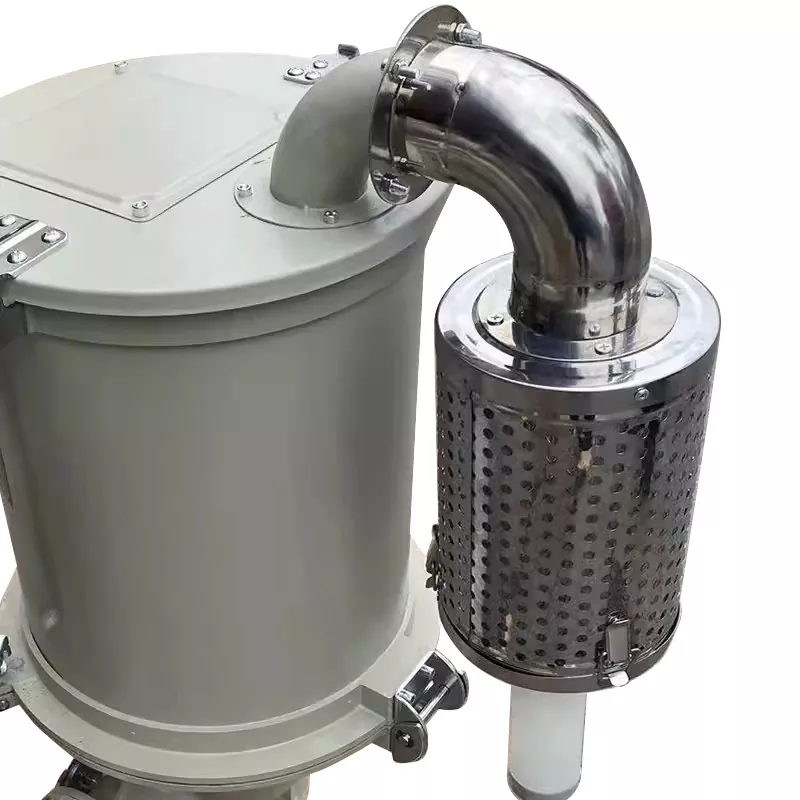What is a Dust Collector and Why is it Essential for Industrial Operations?
2024-09-14
Dust collectors play a critical role in maintaining air quality in industrial environments, ensuring worker safety, and improving overall operational efficiency. Industries such as woodworking, metalworking, pharmaceuticals, and manufacturing generate substantial dust and particulate matter during production processes. Left uncontrolled, these particles can pose serious health hazards, damage equipment, and violate environmental regulations.
In this blog, we’ll explore what a dust collector is, how it works, and why it’s essential for industrial operations.
---
What is a Dust Collector?
A dust collector is an air filtration system designed to capture, filter, and store dust, fumes, and other particulates from air or gas streams. It consists of a series of components, including filters, fans, hoods, and ducts, which work together to ensure that airborne contaminants are effectively removed from the workspace.
The primary goal of a dust collector is to improve air quality by removing hazardous materials that can cause respiratory issues, reduce visibility, or lead to equipment failure over time.
---
How Does a Dust Collector Work?
The dust collection process typically involves the following stages:
1. Capture: Dust and particles are captured at their source using hoods, nozzles, or extraction arms that are placed near the areas where dust is generated.
2. Conveyance: Once captured, the air containing dust is transported through a series of ducts to the dust collector unit.
3. Filtration: In the dust collector, the air passes through filters that trap the dust particles while allowing clean air to pass through. The type of filter used can vary, including bag filters, cartridge filters, or cyclones, depending on the size and nature of the particulates.
4. Collection: The collected dust is then deposited into a hopper or bin, where it can be safely stored for disposal or further processing.
5. Air Discharge: After filtration, the clean air is either recirculated back into the workspace or discharged outside, depending on the system’s design.
---
Types of Dust Collectors
There are several types of dust collectors, each designed for different industrial needs:
1. Baghouse Dust Collectors: These use fabric filter bags to trap fine dust particles. They are highly effective in industries such as cement manufacturing and woodworking.
2. Cartridge Dust Collectors: Using pleated filters, these collectors are more compact and efficient for small to medium-sized particles.
3. Cyclone Dust Collectors: Ideal for larger, heavier particles, cyclone collectors use centrifugal force to separate dust from the airflow. They are often used in pre-filtration before a secondary system.
4. Electrostatic Precipitators: These use electrical charges to capture particles, making them ideal for industries that produce fine or sticky dust, such as food processing.

---
Why Dust Collectors are Essential
1. Improved Air Quality: Dust collectors significantly improve indoor air quality by capturing harmful dust and pollutants, ensuring that workers are not exposed to dangerous airborne particles. This is critical in maintaining a safe work environment.
2. Regulatory Compliance: Industrial dust can lead to violations of environmental regulations, potentially resulting in fines and penalties. Dust collectors help industries comply with local and international air quality standards.
3. Equipment Longevity: Dust accumulation can damage sensitive equipment, causing mechanical failures and increased maintenance costs. By controlling dust, industries can extend the life of their machinery.
4. Enhanced Productivity: Clean air promotes a more efficient workspace by reducing the risk of respiratory problems among workers and preventing dust from interfering with equipment performance.
5. Energy Efficiency: Modern dust collectors are designed with energy efficiency in mind, using less power to operate while providing superior filtration.
---
Applications of Dust Collectors
- Woodworking: Sawdust and wood chips are efficiently captured to prevent fire hazards and respiratory issues.
- Metalworking: Dust collectors capture fine metal particles generated during grinding, cutting, and welding.
- Pharmaceuticals: Ensures a sterile production environment by controlling dust and preventing contamination.
- Food Processing: Dust from ingredients like flour and sugar is collected to maintain hygiene and safety.
---
Conclusion
Dust collectors are a vital component of any industrial operation that generates dust or airborne particles. From protecting workers' health to maintaining equipment efficiency, these systems ensure compliance with safety standards and enhance overall productivity. If your business involves processes that produce dust, investing in a high-quality dust collection system is essential for long-term success.


